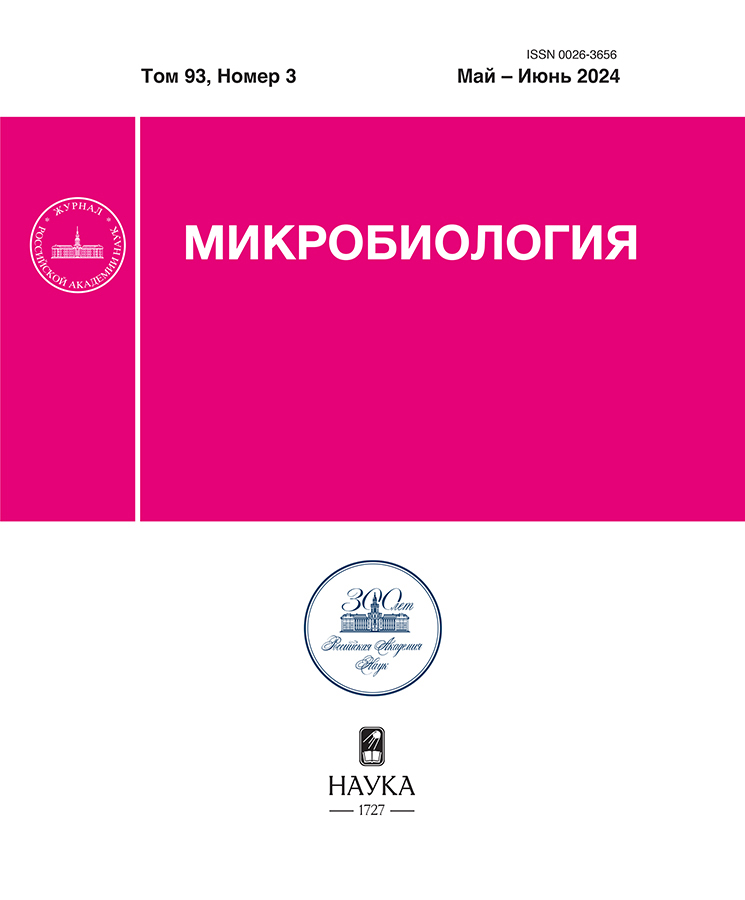Antimicrobial Activity of Terpenes and Oxygen-Containing Terpenoids Against Staphylococcus aureus
- Authors: Kolesnikova A.I.1, Kayumov A.R.1, Gilfanov I.R.1, Frolova L.L.2, Nikitina L.E.3, Trizna E.Y.1
-
Affiliations:
- Kazan (Volga Region) Federal University
- Institute of Chemistry, Komi Science Center, Ural Branch, Russian Academy of Sciences
- Kazan State Medical University
- Issue: Vol 93, No 3 (2024)
- Pages: 374-378
- Section: SHORT COMMUNICATIONS
- URL: https://hum-ecol.ru/0026-3656/article/view/655111
- DOI: https://doi.org/10.31857/S0026365624030167
- ID: 655111
Cite item
Abstract
At various pathological states, Staphylococcus aureus may cause a number of diseases. Rapid spread of antibiotic resistance necessitates the search for alternative approaches to antimicrobial treatment of staphylococci. Due to their membranotropic properties, natural and synthetic terpenoids are capable both of antimicrobial action and of potentiation of the effect of other antimicrobial agents. Antimicrobial activity of 53 natural terpenes and their synthetic oxygen-containing derivatives was determined, as well as their ability to potentiate the effect of known antimicrobials on S. aureus. Two- to fourfold increase in efficiency of amikacin, ceftriaxone, and miramistin in the presence of (+)-3β,4β-carandiol and (‒)-myrtenic acid indicates the possibility of their application for combined therapy together with medical preparations in order to decrease the concentrations of the latter.
Full Text
About the authors
A. I. Kolesnikova
Kazan (Volga Region) Federal University
Email: trizna91@mail.ru
Russian Federation, Kazan
A. R. Kayumov
Kazan (Volga Region) Federal University
Email: trizna91@mail.ru
Russian Federation, Kazan
I. R. Gilfanov
Kazan (Volga Region) Federal University
Email: trizna91@mail.ru
Russian Federation, Kazan
L. L. Frolova
Institute of Chemistry, Komi Science Center, Ural Branch, Russian Academy of Sciences
Email: trizna91@mail.ru
Russian Federation, Syktyvkar
L. E. Nikitina
Kazan State Medical University
Email: trizna91@mail.ru
Russian Federation, Kazan
E. Yu. Trizna
Kazan (Volga Region) Federal University
Author for correspondence.
Email: trizna91@mail.ru
Russian Federation, Kazan
References
- Bhattacharya R., Rolta R., Dev K., Sourirajan A. Synergistic potential of essential oils with antibiotics to combat fungal pathogens: present status and future perspectives // Phytother. Res. 2021. V. 35. P. 6089–6100.
- Chambers H. F., Deleo F. R. Waves of resistance: Staphylococcus aureus in the antibiotic era // Nat. Rev. Microbiol. 2009. V. 7. P. 629–641.
- Cheesman M. J., Ilanko A., Blonk B., Cock I. E. Developing new antimicrobial therapies: are synergistic combinations of plant extracts/Compounds with conventional antibiotics the solution? // Pharmacogn. Rev. 2017. V. 11. P. 57–72.
- Chouhan S., Sharma K., Guleria S. Antimicrobial activity of some essential oils — present status and future perspectives // Medicines. 2017. V. 4. Art. 58.
- D’Arrigo M., Ginestra G., Mandalari G., Furneri P. M., Bisignano G. Synergism and postantibiotic effect of tobramycin and Melaleuca alternifolia (tea tree) oil against Staphylococcus aureus and Escherichia coli // Phytomedicine. 2010. V. 17. P. 317–322.
- Devi K. P., Nisha S. A., Sakthivel R., Pandian S. K. Eugenol (an essential oil of clove) acts as an antibacterial agent against Salmonella typhi by disrupting the cellular membrane // J. Ethnopharmacol. 2010. V. 130. P. 107–115.
- den Hollander J. G., Mouton J. W., Verbrugh H. A. Use of pharmacodynamic parameters to predict efficacy of combination therapy by using fractional inhibitory concentration kinetics // Antimicrob. Agents. Chemother. 1998. V. 42. P. 744–748.
- Leclercq R., Cantón R., Brown D. F., Giske C. G., Heisig P., MacGowan A.P., Kahlmeter G. EUCAST expert rules in antimicrobial susceptibility testing // Clin. Microbiol. Infect. 2013. V. 19. P. 141–160.
- Lewis K. Platforms for antibiotic discovery // Nat. Rev. Drug Discov. 2013. V. 12. P. 371–387.
- Lister J. L., Horswill A. R. Staphylococcus aureus biofilms: recent developments in biofilm dispersal // Front. Cell. Infect. Microbiol. 2014. V. 4. Art. 178.
- Mahmoud R. Y., Trizna E. Y., Sulaiman R. K., Pavelyev R. S., Gilfanov I. R., Lisovskaya S. A., Ostolopovskaya O. V., Frolova L. L., Kutchin A. V., Guseva G. B., Antina E. V., Berezin M. B., Nikitina L. E., Kayumov A. R. Increasing the efficacy of treatment of Staphylococcus aureus–Candida albicans mixed infections with myrtenol // Antibiotics. 2022. V. 11. Art. 1743.
- Miklasińska-Majdanik M. Mechanisms of resistance to macrolide antibiotics among Staphylococcus aureus // Antibiotics. 2021. V. 10. Art. 1406.
- Puvača N., de Llanos Frutos R. Antimicrobial resistance in Escherichia coli strains isolated from humans and pet animals // Antibiotics. 2021. V. 10. P. 1–63.
- Shrivastava S. R., Shrivastava P. S., Ramasamy J. World health organization releases global priority list of antibiotic-resistant bacteria to guide research, discovery, and development of new antibiotics // Med. Soc. 2018. V. 32. P. 7–76.
- Tarmo N. Medicinal properties of terpenes found in Cannabis sativa and Humulus lupulus // Eur. J. Med. Chem. 2018. V. 157. P. 198–228.
- Zaman S. B., Hussain M. A., Nye R., Mehta V., Mamun K. T., Hossain N. A review on antibiotic resistance: alarm bells are ringing // Cureus. 2017. V. 9. Art. e1403.
Supplementary files










